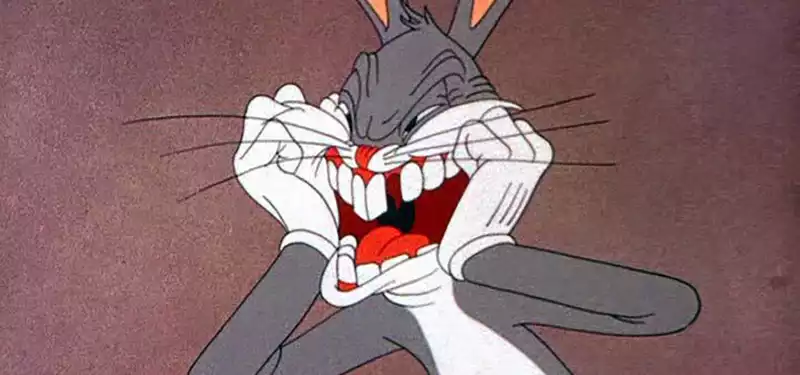Nov 3, 2022
Detailed timeline of Warner Bros. and Cartoon Network animation since acquisition by Discovery
Six months have passed since Discovery completed its acquisition of Warner Bros. from AT&T.
In anticipation of Warner Bros. Discovery's third-quarter earnings announcement today, I thought it would be a great time to reflect on WBD's first six months and reassess the state of animation at this legendary studio.To that end, I have compiled a timeline of the animation stories that have emerged from Warners over the past six months.
Some notes on the timeline:
April 8: Discovery completes its acquisition of Warner Bros. from AT&T.
May 6: HBO Max and Cartoon Network announce animated feature Driftwood and series Invincible Fight Girl.
May 11: Tom Askeem, head of Warner's Kids/YA division, announces he is leaving the company.
May 11: Cartoon Network announces three new original live-action productions. Because the first attempt went so well.
May 18: Adult Swim announced Rick and Morty: Anime and Ninja Kamui.
May 18: HBO Max and Cartoon Network announce Chelm: an anime project by Mike Judge, Greg Daniels, and Sacha Baron Cohen.
May 23: HBO Max and Cartoon Network announced Scooby-Doo: And Mystery Pups, the franchise's first pre-school show.
June 1: Warner Bros. Pictures Group chairman Toby Emmerich steps down.
June 7: Amy Friedman, head of kids' and family programming at Warner Bros. including Cartoon Network, claims that "girls often outgrow animation" as the reason for her return to live-action programming.
June 15: HBO Max commissioned the Mexican-set Aztec-era Batman feature "Batman Azteca" to HBO Max Latin America, and Joe Bennett and Charles Huttner's sci-fi survival series "Scavengers Reign" was released.
August 2: The sequel to Scoob. is cancelled 95% of the time, as is the live-action Batgirl movie.
August 4: This is where things take a turn for the worse: WBD holds an earnings call where CEO David Zaslav explains the company's future plans. From this point on, most of the news released by Warner is about cuts, cancellations, layoffs, and consolidations as Zaslav and his crew implement their most extreme cost-cutting measures to date.
August 15: Allison Abate steps down as head of Warner Animation Group.
August 18: Dozens of shows are removed from HBO Max without warning.
August 22: The original animated feature Driftwood, announced only three months earlier, is canceled.
August 22: Warner announces that six upcoming HBO Max original shows can no longer proceed with the streaming distributor. It was subsequently confirmed that most of the productions would be moved to other networks and platforms.
August 20: Infinity Train creator Owen Dennis, one of the first showrunners of the series to be removed from HBO Max, posted a candid open letter on his Substack.
September 1: Diego Morano, creator of "Victor and Valentino," one of the shows removed from Max, talks about Cartoon Brew and HBO Max's removed shows.
September 17: Warner lays off the staff of the Looney Tunes feature "Bye Bye Bunny," but confirms to Cartoon Brew that the film is still in progress and being reworked as a "full-fledged musical."
September 24: Several law firms file suit on behalf of Warner Bros. Discovery investors, claiming the company defrauded them leading up to the merger.
September 28: In response to intense public speculation that the company is considering a new ownership change as soon as legally possible, CEO David Zaslav insists to employees, "We are not for sale, we are definitely not for sale."
October 11: A memo sent by WBD Chairman Channing Dungey announced that the infamous day that the development and production management division of Warner Bros. Animation and Cartoon Network Studios will merge, and the operation of CNS will fundamentally change.
Cartoon Network Studios, which opened in the mid-1990s as a division of Hanna-Barbera, operated with at least some autonomy for nearly 30 years. That studio no longer exists, at least not as we know it. Its agenda will be driven by WBD's budget-focused management team, whose primary concern is to eliminate billions in debt.
Brian Miller, former general manager of Cartoon Network Studios and a key figure at the company for 21 years, described the news of the merger in a three-word tweet explaining why CNS became a radically different studio: "Culture is everything.
With Warner bosses now at the helm of CNS, the studio now shares development and production resources with WBA. How that change will manifest itself is anyone's guess.
October 31: WBD announced that James Gunn and Peter Safran would become co-heads of DC Studios, including animation. What this means for DC Animation is not yet entirely clear, but the new executives will be responsible for DC series (Harley Quinn, Teen Titans Go, Batwheel), direct-to-video films from Warner Bros. Animation, and feature films from the Warner Animation Group (DC League of Superpets), seemingly suggesting a role in the Warner Animation Group (DC League of Superpets).
.



Post your comment